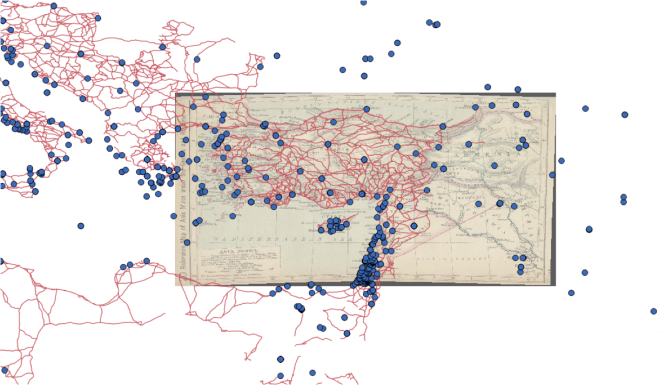In the third installment of our Topics in Digital Mapping Workshop Series, “Georectifying Maps and Using Map Warper,” David Wrisley demonstrated georectifying to participants, showing us how to code maps and other images onto digital coordinates. David offered many possibilities for why one might want to georectify a map, including:
-
Organization of a catalog by spatial metadata
-
Mining information from analog data
-
Definition of borders that aren’t political or topographical
-
Rethinking the relativity of spatial representations and coordinate systems from an intentionally warped image
-
Map deformance, a way of thinking through the relative spatiality of documents that resemble maps
-
Or just for a nifty background to one’s own map
David also introduced us to some of the tools for georectifying, including the data format Keyhole Markup Language (KML or KMZ) and OpenStreetMap, an open access, collaborative project by rebellious mappers who chart neighborhoods for the public. Workshop participants then practiced georectification with NYPL’s Map Warper, using an 1873 map of Painted Post, NY, found at http://maps.nypl.org/warper/maps/11615.
For a list of links from this workshop, please visit http://www.tinyurl.com/fordhammapping9.
Blog post by Heather Hill, MVST student at Fordham University

